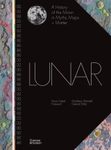![Solar System Astrophysics: Background Science and the Inner Solar System Solar System Astrophysics: Background Science and the Inner Solar System]()
Click to have a closer look
About this book
Contents
Customer reviews
Biography
Related titles
Recommended titles
About this book
The second edition of Solar System Astrophysics: Background Science and the Inner Solar System provides new insights into the burgeoning field of planetary astronomy. As in the first edition, this volume begins with a rigorous treatment of coordinate frames, basic positional astronomy, and the celestial mechanics of two and restricted three body system problems. Perturbations are treated in the same way, with clear step-by-step derivations. Then the Earth's gravitational potential field and the Earth-Moon system are discussed, and the exposition turns to radiation properties with a chapter on the Sun. The exposition of the physical properties of the Moon and the terrestrial planets are greatly expanded, with much new information highlighted on the Moon, Mercury, Venus, and Mars.
All of the material is presented within a framework of historical importance. This book and its sister volume, Solar System Astrophysics: Planetary Atmospheres and the Outer Solar System, are pedagogically well written, providing clearly illustrated explanations, for example, of such topics as the numerical integration of the Adams-Williamson equation, the equations of state in planetary interiors and atmospheres, Maxwell's equations as applied to planetary ionospheres and magnetospheres, and the physics and chemistry of the Habitable Zone in planetary systems.
Together, the volumes form a comprehensive text for any university course that aims to deal with all aspects of solar and extra-solar planetary systems. They will appeal separately to the intellectually curious who would like to know how just how far our knowledge of the solar system has progressed in recent years.
Contents
- Perceptions of the Solar System in History
- Basic Tools and Techniques
- Celestial Mechanics
- The Core of the Solar System: The Sun
- General Properties of Terrestrial Planets
- Planetary Heat Flow and Temperatures
- Rocks and Minerals
- The Moon's Surface, Structure, and Evolution
- Surface Science of our Terrestrial Planets
Customer Reviews
Biography
Eugene Milone has been Professor of Physics, Astronomy, and Astrophysics for 35 years, and has taught at the University of Calgary, San Diego State University, and Ruhr-Universitat Bochum. He is a member of the International Astronomical Union, American Astronomical Society, Canadian Astronomical Society, Astronomical Society of the Pacific, New York Academy of Science, Royal Astronomical Society of Canada, International Dark Sky Society, and the International Symposia.
William Wilson has been Professor of Physics, Astronomy, and Astrophysics at the University of Calgary for 30 years. He has spent 15 years teaching courses in Solar System Astrophysics and Stellar Structure and Evolution. His research areas are stellar evolution and stellar properties.
Textbook
By: Eugene F Milone(Author), William JF Wilson(Author)
335 pages, 21 colour & 159 b/w photos and illustrations, 16 tables
"As a textbook I found it excellent. Although I've taken master's level courses on astronomy at the university there was a lot of interesting content, and what I loved the most, were the 'Challenges' at the end of each chapter – mostly problems where you need to calculate something or derive an equation. [...] If you want a detailed account of the inner solar system, I think this is the book to dive into."
– Kadri Tinn, AstroMadness.com, January, 2015
"This second edition [...] provides 'new insights' on the topic and contains additional material on the sun, moon, Mercury, Venus, Mars, and other areas. [...] The writing is lucid and the discussions are easy to follow. This valuable addition to college libraries will also be welcome on the bookshelf of anyone with an interest in the solar system. Summing Up: Highly recommended. Upper-division undergraduates and above."
– A. Spero, Choice, Vol. 52 (1), September, 2014
Review of the first edition:
"This book is the first of a two-part series based on undergraduate notes from a course designed by Milone and Wilson [...] for second- and third-year astrophysics majors and given at Calgary. [...] There are ample black-and-white photos, six pages of color photos, adequate figures and diagrams, plus a good nine-page index. [...] Summing Up: Highly recommended. Upper-division undergraduate through professional collections."
– W. E. Howard, Choice, Vol. 46 (4), December, 2008












































